The Camp
Local farmers called the rural promontory above the Schuylkill River “Break
Neck Hill.” At the time of the Civil War, the land belonged to farmer Joseph
Kirkner whose old stone farmstead sat on the wooded slope. Beyond the bluff
were fields of crops and grazing land; Merion Square (Gladwyne today) was two
miles to the southwest. The site was isolated, and to military eyes that made
it useful.
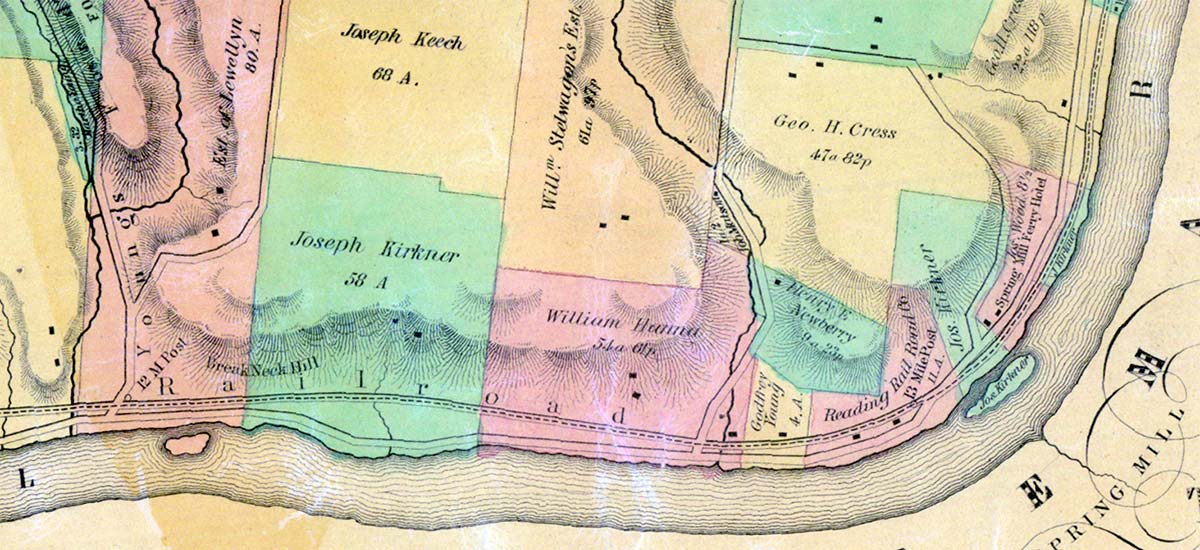
Young’s Ford and Spring Mill Roads.
Map of the Township of Lower Merion (J. H. Levering, Philadelphia, 1851);
Lower Merion Historical Society
The Army Moves In
In June 1864, the War Department ordered that a special camp be established
near Philadelphia to house up to two thousand Pennsylvania troops. The war was
still raging in the South, but there was another urgent concern. Tens of
thousands of Pennsylvania men had volunteered back in 1861 for three-year
enlistments—and their discharge dates were coming due.
While some of them would re-enlist, most were eager to be mustered out and
return home. A site team selected the Gladwyne locale for the mustering-out
camp because its very remoteness would limit the soldiers’ access to taverns
and other urban temptations, and prevent “camp diseases” like smallpox and
typhoid from spreading to the general public. Plus, the Reading Railroad line
abutted the property along the river flats, guaranteeing ready access to
Philadelphia.
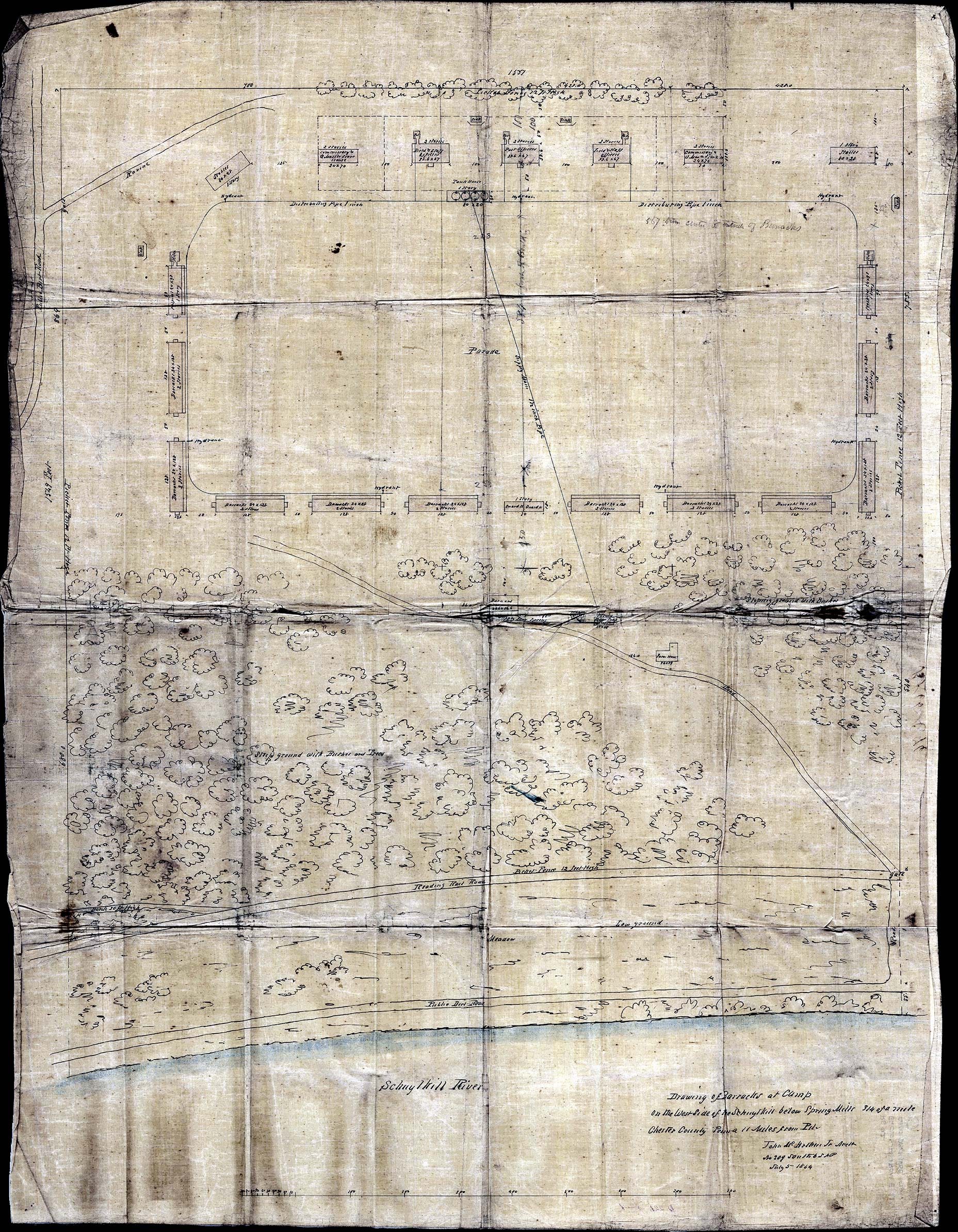
July 5, 1864”. Architect’s drawing on cloth National Archives
The Army leased the land and erected a quarter-mile-square campus of buildings
enclosed by a high stockade fence. Local workers provided the materials and
labor. A command staff and a force of garrison guards were brought in, and in
October 1864, Camp Discharge was officially opened. By then, scores of weary
young servicemen had already arrived for muster-out. They were the first of
1,118 soldiers from 89 Pennsylvania regiments who would transit the camp
during the eventful coming year.

opposite Spring Mill, Montgomery Co., W. B. Powell).
The image can be scrolled horizontally.
Historical Society of Pennsylvania
The Problems Begin
Most of these servicemen were different. Unlike other “three-year men” who
were being mustered out en masse with their regiments, the soldiers sent to
Camp Discharge were “strays”, separated from their units in the field due to
capture, hospitalization or detached duty. Unfortunately, that also meant
separated from their officers and paperwork. Finding and finalizing paperwork
to officially clear an individual for muster-out was a slow, arduous process.
As the strays waited in administrative limbo, performing make-work tasks and
killing time, their restlessness could turn to anger. One man wrote his
congressman to blast Camp Discharge as “without any exception the most
miserably conducted camp I ever saw.” The barracks quickly became “a growler’s
paradise.” As men went AWOL to local saloons, or to visit their families in
Philadelphia and elsewhere, the camp guards increased their patrols and the
guardhouse filled up with violators. Fortunately, the steady outflow of men
who’d been successfully discharged helped to keep hopes up for the others.
The Physical Wrecks
According to the book Back From Battle, more than three hundred
of the stray men had straggled north after being released from the wretched
Andersonville prison in Georgia. Many of them were at death’s door, and had
seen comrades succumb at Andersonville and other Confederate prisons.
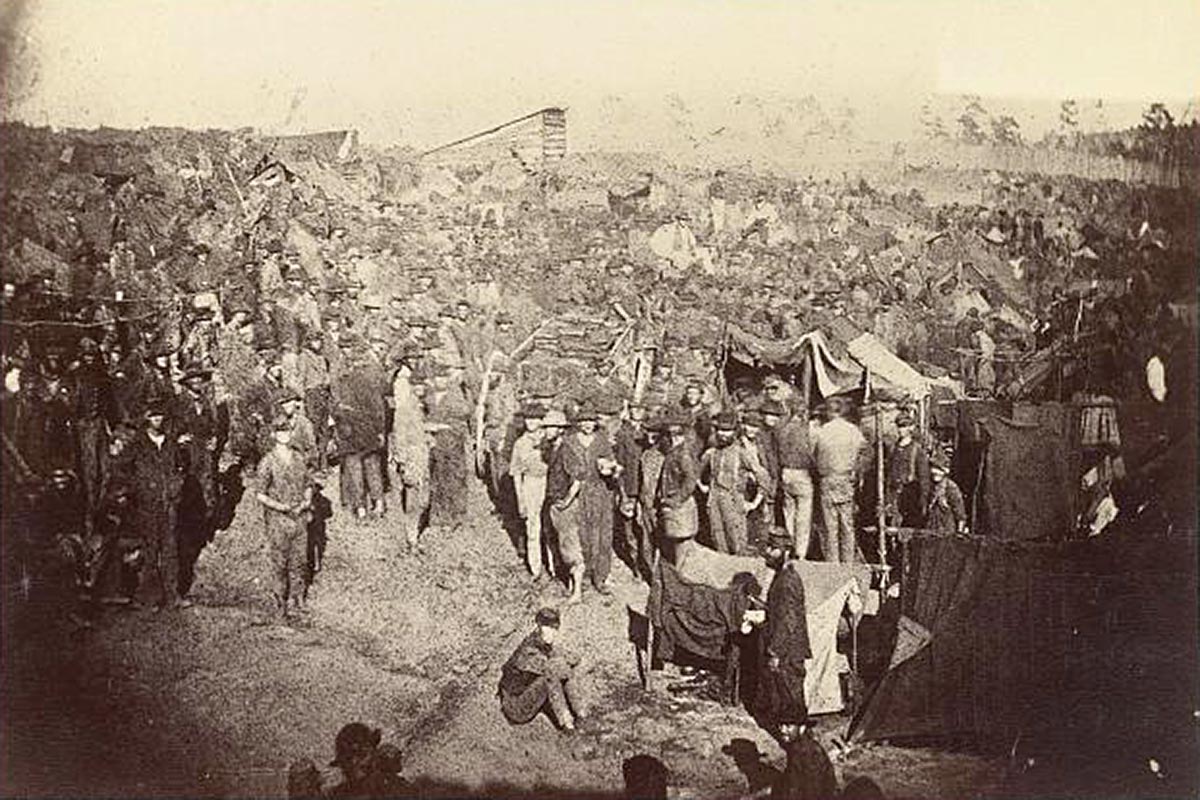
Library of Congress
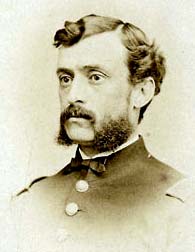
Courtesy Historical Society of Montgomery County (Pa.)
Camp Discharge had an understaffed hospital that would log in more than eight
hundred patients—”a collection of broken down men who required a great
deal of work,” wrote staff doctor Joseph K. Corson, of Plymouth Meeting.
Ailments ranged from pestilent smallpox and typhoid to an assortment of
lingering lung, skin and intestinal diseases. Other men, especially the camp
guards, showed up with venereal diseases. Medical treatments of the day were
often ineffective (castor oil), dangerous (mercury) or addictive (opium). A
few ailing soldiers died at the camp, while others would go on to lead
woefully curtailed lives.
In the Thick of It
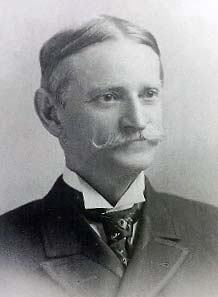
Courtesy U.S. Army Heritage and Education Center, Carlisle, Pa.
The daily train brought a flow of new arrivals and carried away more and more
of the discharged during the winter months of 1864-65. The camp commandant,
Col. John Hancock of Norristown, endeavored to improve the camp’s operations
and morale. At the same time, Hancock undertook some pet projects to dress up
the camp—and his own quarters—that caused friction with his staff
officers. Military records chronicle outbreaks of squabbling at the camp
headquarters. One supply officer actually faced a court-martial for
insubordination. Hancock pressed on with his projects, even though an Army
inspector criticized them as costly and indulgent. Meanwhile, North-South
prisoner exchanges were resuming in full, resulting in ever more woebegone
arrivals at the camp and its hospital.
The Turning Point
April 1865 saw dramatic events. Confederate commander Robert E. Lee
surrendered at Appomattox and the camp’s decorative brass cannons were fired
across the valley in celebration. Six days later, President Lincoln was
assassinated. As Lincoln’s bier traveled from city to city, a contingent from
the camp served as an honor guard in Philadelphia. The war’s end brought an
order to quickly demobilize the Union’s huge volunteer army and cut costs.
Military hospitals cleared out as many patients as possible. Newer enlistees
were mustered out even before their one-year and two-year terms were complete.
Camp Discharge went from discharging 68 soldiers in April to 85 in May to 252
in June. In July the camp was ordered closed. Hancock and his team departed,
replaced by a small caretaking force. The Army held a public auction of all
the camp contents—every board, shingle and horse trough—that
efficiently cleared the premises.
The Aftermath
Some of the camp’s wooden structures were moved to mills in nearby
Conshohocken and put to new use. The Balligomingo Woolen Mill erected the
camp’s huge flagpole on its site, where it towered until a fire consumed it in
1889. The Camp Discharge acreage reverted to its owner, who put it back to
farm use.
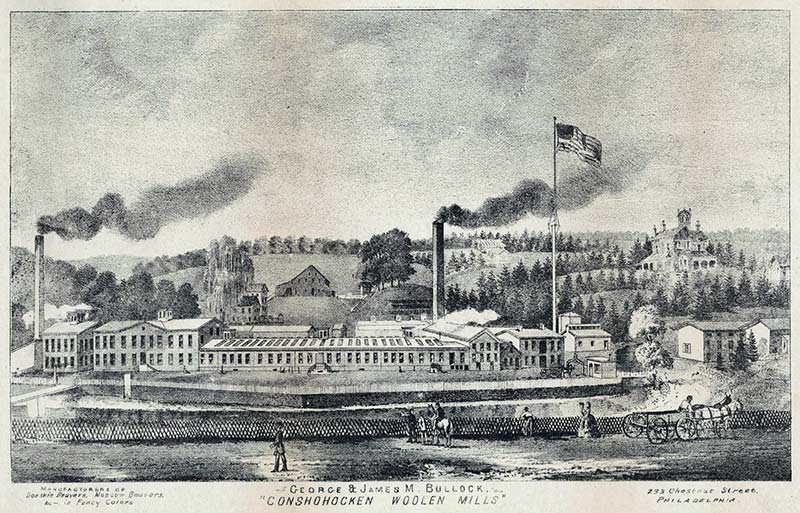
this 1875 print.
Courtesy
Library Company of Philadelphia
The property would change hands several times over the next century but would
keep its bucolic character as a mix of crop land, pasture and woods. In the
1880s, iron magnate Howard Wood built a summer estate on an adjacent point on
the ridge and dubbed it “Camp Discharge” to keep the name alive. For years his
son Clement put the land to renewed military use by holding encampments of his
First Troop Philadelphia City Cavalry unit.

Courtesy Alan Wood

Gladwyne Library
By the mid-1960s the Wood estate house was gone and the old Camp Discharge
grounds had become the private property of the Philadelphia County Club. Today
the club’s Centennial Course runs across the camp’s upper end. The slope down
to the Schuylkill—the old Break Neck Hill—is a wooded buffer, its
history unmarked.
